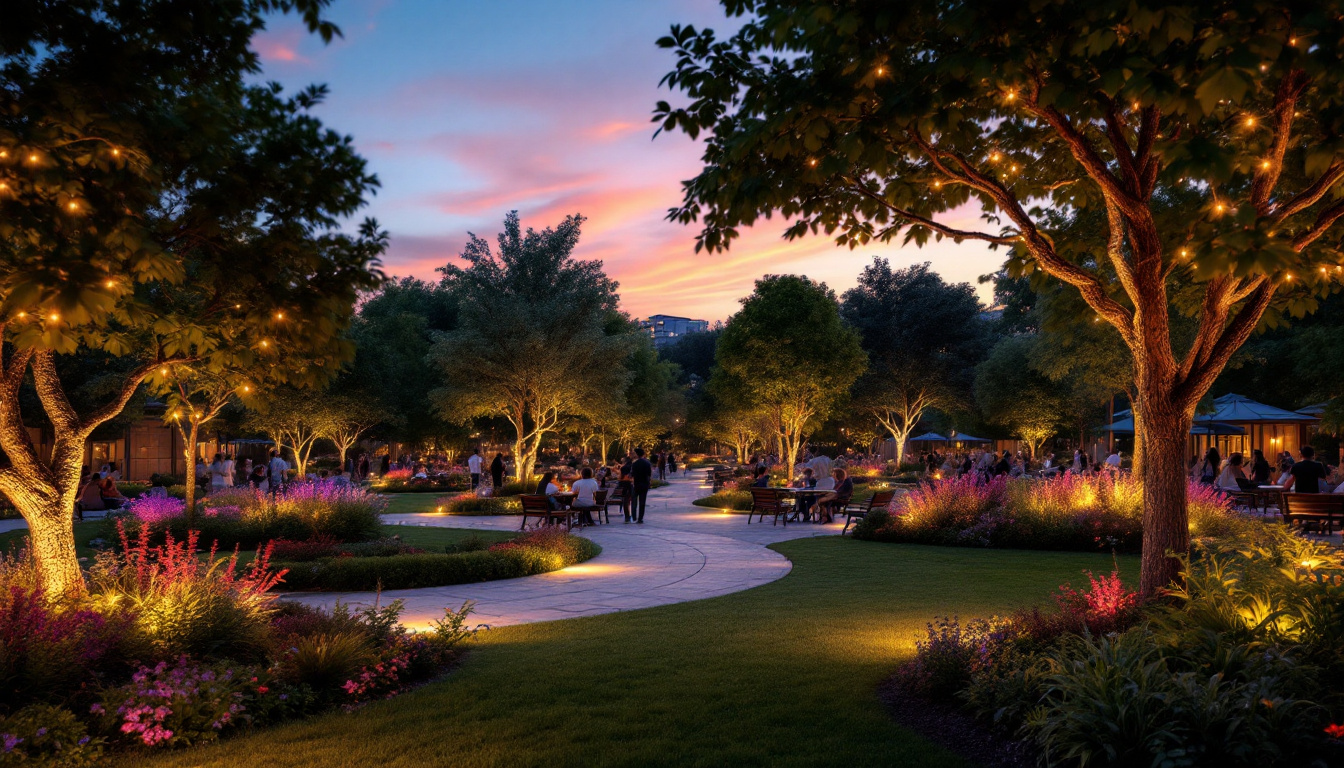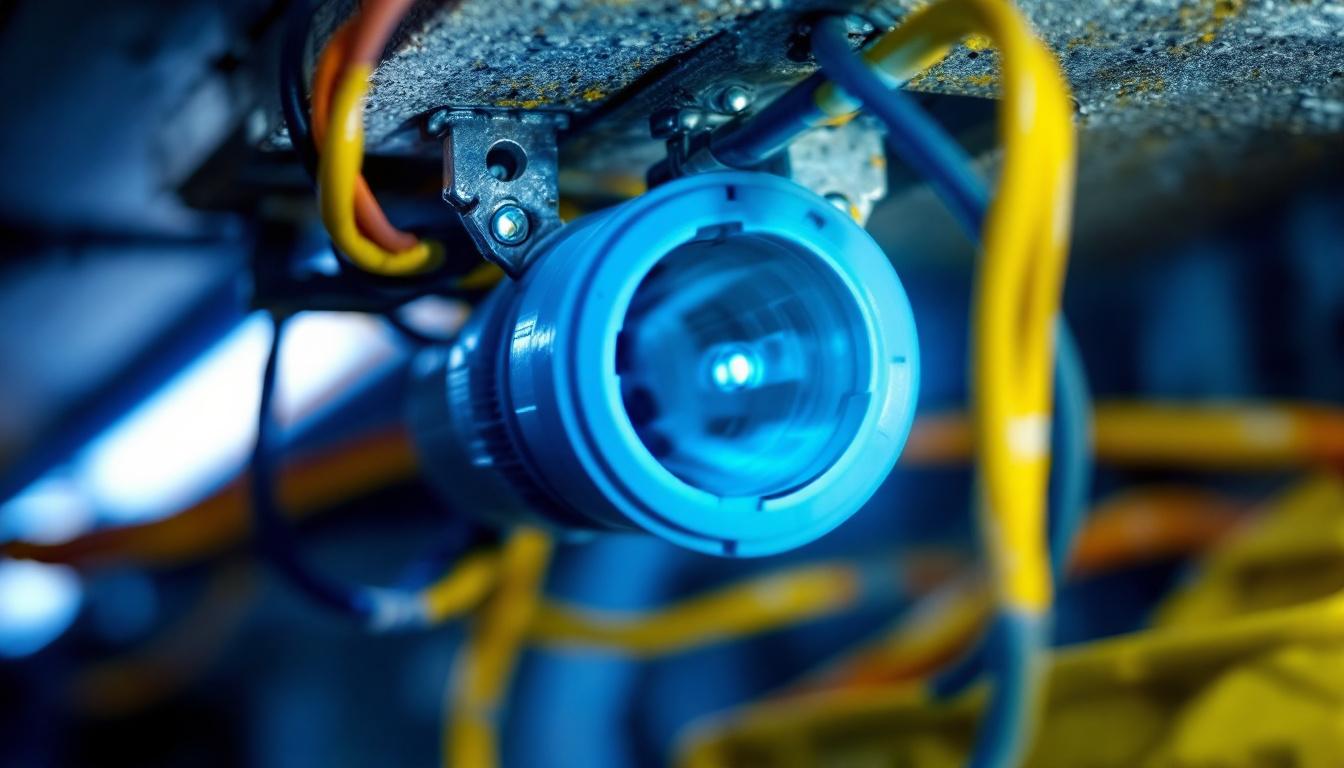
In the world of home entertainment, the ambiance created by lighting can significantly enhance the viewing experience. For lighting contractors, understanding the intricacies of home movie theater lighting is essential. This article delves into the various aspects of designing and implementing effective lighting solutions for home theaters, providing valuable insights that can simplify the process for professionals in the field.
Lighting plays a crucial role in setting the mood and enhancing the overall experience of a home movie theater. It is not merely about illumination; it is about creating an atmosphere that complements the cinematic experience. Proper lighting can transform a simple room into a captivating space that draws viewers into the film.
The right lighting can evoke emotions and heighten the drama of a film. Dim, warm lighting can create a cozy and inviting environment, while brighter, cooler lights may be more suitable for action-packed scenes. Understanding how different lighting temperatures affect mood is vital for contractors aiming to provide an immersive experience. For instance, utilizing LED strip lights along the edges of the screen can provide a subtle glow that enhances the viewing experience without distracting from the film itself. Additionally, incorporating smart lighting systems allows for dynamic adjustments throughout the movie, enabling viewers to feel the tension build during suspenseful moments or relax during lighter scenes.
When designing lighting for a home theater, it is essential to balance functional and aesthetic needs. Functional lighting ensures that the space is safe and accessible, while aesthetic lighting enhances the visual appeal. This dual approach allows contractors to create a space that is both practical and visually stunning. For example, strategically placed sconces can provide ambient light that illuminates pathways without overpowering the screen, while dimmable recessed lighting can adapt to the film’s mood. Moreover, the use of color-changing LEDs can add a unique flair, allowing homeowners to personalize their theater experience by matching the lighting to the genre of the film or even the emotions conveyed in specific scenes. This thoughtful integration of lighting not only enhances the viewing experience but also showcases the homeowner’s style and creativity.
Several key elements must be considered when designing lighting for home theaters. Each element contributes to the overall effectiveness of the lighting scheme and can significantly impact the viewer’s experience.
Ambient lighting serves as the foundation of any lighting design. It provides general illumination and sets the mood for the space. In home theaters, ambient lighting should be adjustable to accommodate different viewing scenarios. Dimmable LED fixtures or wall sconces can provide the necessary flexibility, allowing contractors to tailor the lighting to the film being viewed.
Task lighting is essential for specific activities within the home theater, such as reading or navigating the space. This type of lighting should be strategically placed to avoid glare on screens and ensure safety. Options like recessed lighting or adjustable floor lamps can effectively illuminate pathways and seating areas without detracting from the cinematic experience.
Accent lighting adds depth and character to the home theater. It highlights architectural features, artwork, or decorative elements, creating a more engaging environment. Lighting contractors can utilize LED strips, spotlights, or backlighting to draw attention to specific areas, enhancing the overall design of the space.
Incorporating advanced lighting controls and automation can significantly improve the functionality and user experience of a home theater. These systems allow for precise control over lighting levels and can be programmed to create specific scenes for different types of content.
Smart lighting solutions offer convenience and flexibility. With the ability to control lighting via a smartphone or voice commands, users can easily adjust the ambiance without interrupting their viewing experience. Lighting contractors should consider integrating smart systems that are compatible with existing home automation setups to provide seamless control.
Creating predefined scenes can enhance the user experience by allowing viewers to select the perfect lighting for various activities. For instance, a “Movie Night” scene could dim ambient lights while highlighting the screen, whereas a “Game Night” scene might require brighter, more functional lighting. These customizable settings can make a home theater feel more personalized and sophisticated.
The placement of lighting fixtures is critical to achieving the desired effects in a home theater. Poorly positioned lights can cause glare, shadows, or uneven illumination, detracting from the viewing experience. Therefore, careful planning is essential.
When determining lighting placement, the position of the screen should be a primary consideration. Lights should be positioned to minimize reflections and glare on the screen while ensuring that the space is adequately illuminated. This often involves placing fixtures behind the viewer or at angles that direct light away from the screen.
The arrangement of seating can also influence lighting design. For example, if the seating is arranged in a tiered format, lighting should be placed to ensure that all areas are evenly lit without casting shadows. Additionally, pathways to and from seating should be well-lit to enhance safety and accessibility.
Selecting the appropriate fixtures is crucial for achieving the desired lighting effects in a home theater. Various types of fixtures offer different benefits and can be used in combination to create a well-rounded lighting scheme.
LED lighting has become a popular choice for home theaters due to its energy efficiency and versatility. LED fixtures can be dimmed and are available in various color temperatures, making them suitable for creating the desired atmosphere. Additionally, their long lifespan reduces the need for frequent replacements, making them a cost-effective option for contractors.
Recessed lighting is an excellent choice for home theaters, providing a clean and unobtrusive look. These fixtures can be strategically placed to provide ambient and task lighting without interfering with the overall design of the space. Adjustable recessed lights allow for flexibility in directing light where it is needed most.
Wall sconces are another valuable addition to home theater lighting. They can provide ambient light while adding a decorative element to the room. When selecting wall sconces, contractors should consider styles that complement the overall design of the theater, ensuring that they blend seamlessly with the decor.
The color temperature of lighting can significantly affect the mood and perception of space. Understanding how to manipulate color temperature is essential for creating the right ambiance in a home theater.
Warm lighting, typically in the range of 2700K to 3000K, creates a cozy and inviting atmosphere. This type of lighting is ideal for relaxing movie nights. In contrast, cool lighting, which ranges from 4000K to 5000K, can create a more vibrant and energetic environment, suitable for action films or gaming. Contractors should consider the type of content that will be viewed most often when selecting color temperatures.
Incorporating adjustable color temperature fixtures allows users to customize their lighting according to their preferences and the type of content being viewed. This flexibility enhances the overall experience and can make a significant difference in how viewers engage with the film.
Lighting contractors may encounter several challenges when designing lighting for home theaters. Understanding these challenges and knowing how to address them can lead to more successful installations and satisfied clients.
Glare can be a significant issue in home theaters, particularly when using reflective surfaces or bright lighting fixtures. To mitigate glare, contractors should focus on indirect lighting solutions and avoid placing fixtures directly in the line of sight of the screen. Utilizing dimmable fixtures can also help manage brightness levels effectively.
Light pollution can detract from the immersive experience of a home theater. To minimize this, contractors should consider using blackout curtains or shades to block external light sources. Additionally, strategically placed lighting that focuses on key areas rather than illuminating the entire room can help maintain the desired atmosphere.
The field of home theater lighting is continually evolving, with new technologies and design trends emerging regularly. Staying informed about these trends can help lighting contractors provide cutting-edge solutions to their clients.
As smart home technology continues to advance, the integration of lighting systems with other home automation features is becoming increasingly popular. This integration allows for seamless control over lighting, security, and entertainment systems, enhancing the overall user experience. Contractors should be prepared to offer solutions that work harmoniously with existing smart home setups.
Dynamic lighting solutions that adapt to the content being viewed are gaining traction. These systems can adjust brightness and color temperature based on the film or scene, creating a more immersive experience. Contractors should explore options for integrating such technology into their designs to stay ahead of the curve.
Designing effective lighting for home theaters is a multifaceted task that requires careful consideration of various elements. By understanding the importance of lighting, key components, and the latest trends, lighting contractors can simplify the process and deliver exceptional results for their clients. The right lighting not only enhances the viewing experience but also transforms a home theater into a captivating and inviting space.
Ready to elevate your home movie theater installations with superior lighting solutions? At LumenWholesale, we provide lighting contractors with spec-grade lighting products that promise to transform any home theater into an immersive cinematic retreat. Our commitment to quality, affordability, and convenience ensures you receive the best value in wholesale lighting without the burden of inflated markups or hidden fees. Plus, with free shipping on bulk orders, you can stock up on all the lighting essentials your projects demand. Don’t compromise on quality or cost—explore our collection now and bring the ultimate viewing experience to life with LumenWholesale.

Explore the transformative power of innovative lighting solutions in public spaces with “Park With Lights.” Discover real-world success stories that highlight how lighting contractors are enhancing safety, beauty, and community engagement in parks worldwide..

Discover how amber LEDs are transforming the lighting industry for contractors.

Explore the essential insights every lighting contractor needs to know about fluorescent lights, from energy efficiency to installation tips, in this comprehensive guide.

Discover the frequent pitfalls lighting contractors face with fluorescent lamp sockets.